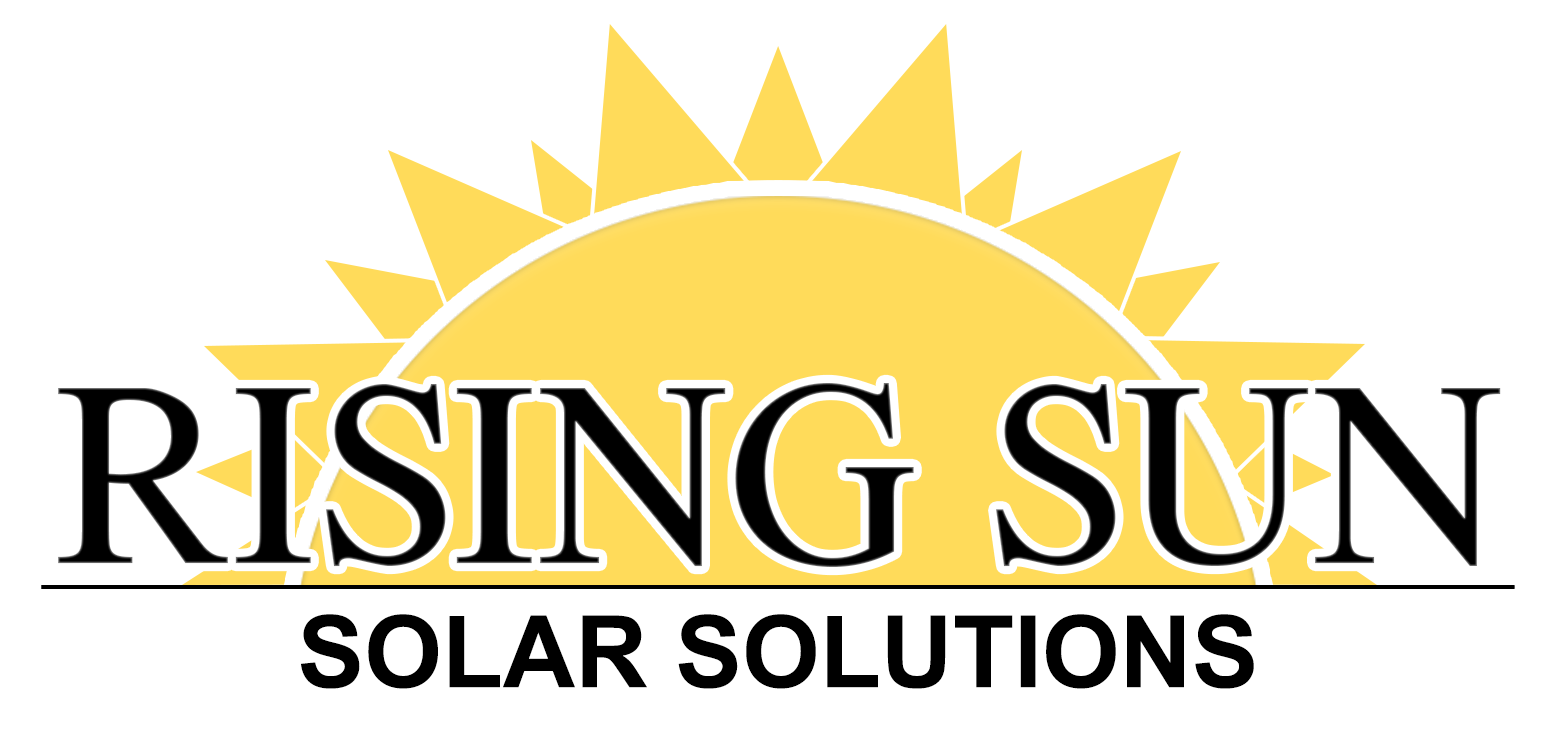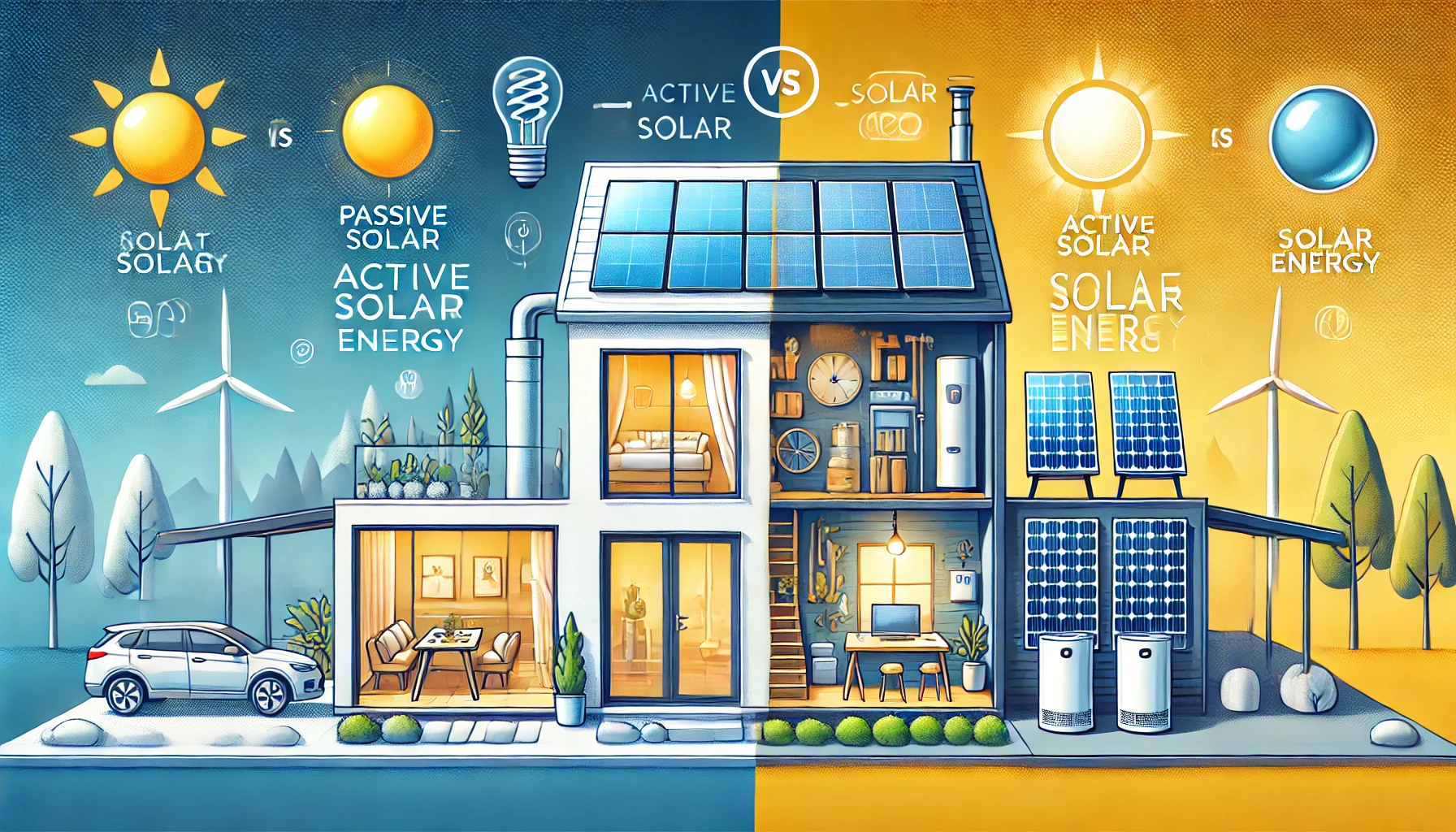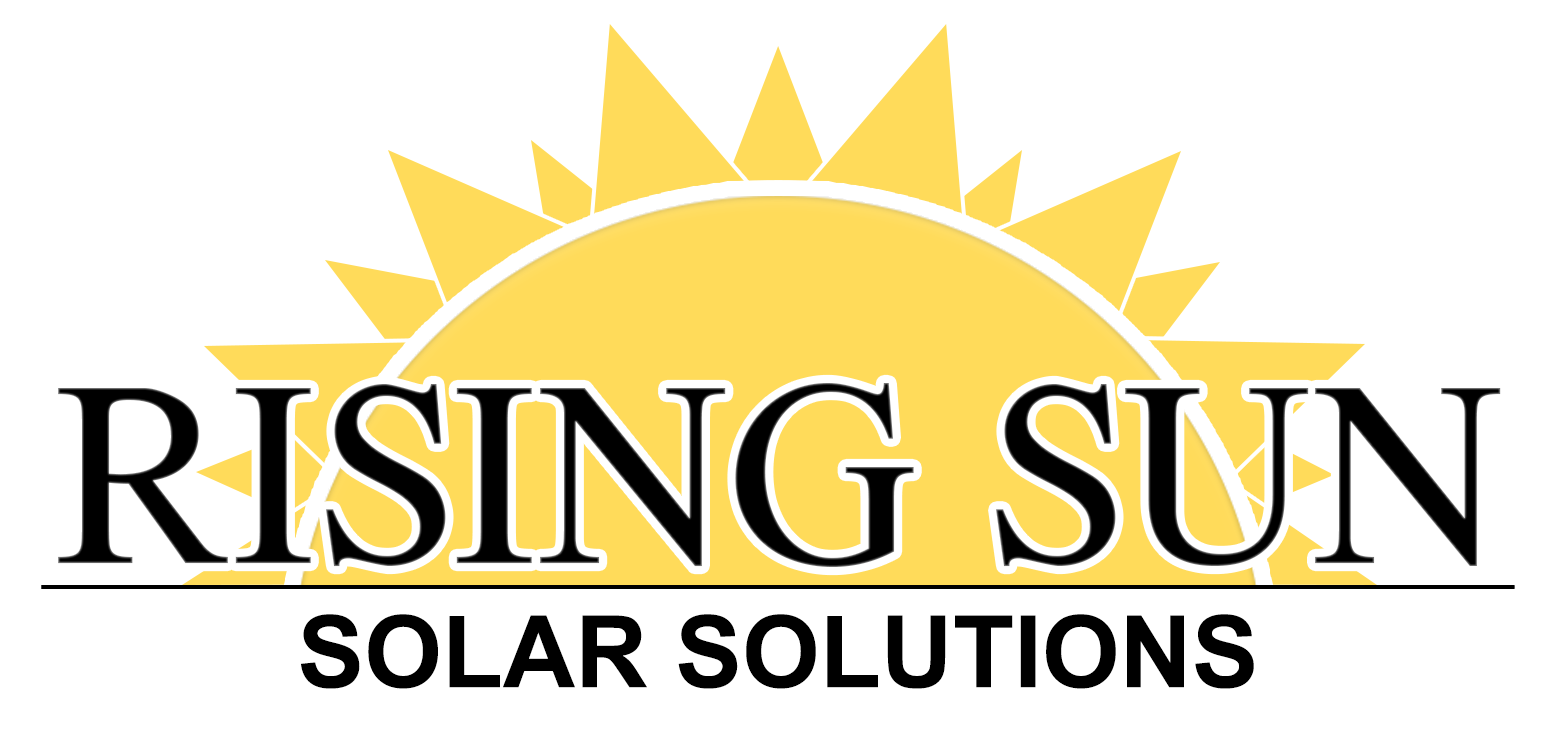About 342 watts of energy radiates every square foot of Earth each year—all thanks to the Sun. Compared to an electrical power plant, it would take at least 44 million facilities to reach this kind of potential.
It is clear that not using this free energy source would be foolish. Luckily, there is more than one way to absorb the sun’s rays.
Active and passive solar energy systems can both harness the its energy but each in there own way. Understanding the difference between active and passive solar energy can help you determine which solution is best for your needs.
What is Passive Solar Energy?
Passive solar energy refers to the design and construction of buildings that naturally harness the sun’s energy without mechanical or electrical devices. This method relies on building materials, orientation, and natural heat flow to regulate indoor temperatures. Here are some key elements of passive solar energy:
- Solar Orientation: Buildings are positioned to maximize exposure to sunlight during winter and minimize heat absorption in summer.
- Thermal Mass: Materials such as concrete, brick, or water absorb heat during the day and slowly release it at night to maintain a comfortable temperature.
- Windows and Overhangs: South-facing windows allow sunlight to enter and warm the interior, while overhangs provide shade in summer to prevent overheating.
- Natural Ventilation: Properly placed windows and vents enable air circulation, cooling the space without mechanical systems.
These features make passive solar designs energy-efficient and cost-effective over time, as they require little to no maintenance once implemented.
What is Active Solar Energy?
Active solar energy systems use mechanical and electrical devices to collect, store, and distribute solar energy. These systems are more complex than passive solar systems and generally involve solar panels or solar thermal collectors to generate electricity or heat. Below are some types of active solar energy systems:
- Photovoltaic (PV) Systems: These systems use solar panels to convert sunlight into electricity, which can power homes and businesses.
- Solar Thermal Systems: These systems use solar collectors to heat water or air for residential and commercial use.
- Pumped Heat Storage: Some active solar heating systems store heated water or air and distribute it through mechanical pumps or fans.
Active solar systems require an initial investment in equipment and installation but offer significant long-term energy savings and sustainability benefits.
Key Differences Between Passive and Active Solar Systems
When comparing passive solar vs active solar, several key differences stand out. The table below summarizes the main distinctions between these two solar energy systems:

While both types of solar energy have their place in sustainable building design, the best option depends on factors such as budget, location, and energy goals.
What Are the Advantages and Limitations of Active and Passive Solar Heating Systems?
Both active and passive solar heating systems offer unique benefits and have their own limitations. Here’s a closer look:
Advantages of Passive Solar Heating:
Passive solar heating has several benefits that make it an attractive choice for energy-conscious homeowners.
- Low installation and maintenance costs
- Reduces reliance on external energy sources
- Environmentally friendly with no emissions
- Enhances indoor comfort with natural temperature regulation
However, passive solar heating also has some drawbacks to consider.
Limitations of Passive Solar Heating:
- Requires careful architectural planning
- Effectiveness depends on climate and location
- Difficult to retrofit into existing buildings
Active solar heating systems, on the other hand, provide a different set of advantages.
Advantages of Active Solar Heating:
- More efficient in capturing and using solar energy
- Can generate electricity and heat water
- Works in various climates with backup systems
Despite these benefits, active solar heating does have a few challenges.
Limitations of Active Solar Heating:
- Higher upfront costs
- Requires mechanical components that may need repairs
- Dependent on sunlight availability and may require battery storage
Examples of Passive and Active Solar Energy
To better understand how these systems work, here are some real-world applications of both passive and active solar energy.
Examples of Passive Solar Energy:
Passive solar energy can be found in various architectural designs and natural heating strategies.
- A home designed with large south-facing windows, thermal mass flooring, and insulated walls to regulate indoor temperatures year-round.
- A greenhouse that utilizes heat-absorbing materials and proper ventilation to maintain optimal growing conditions without heaters.
Active solar energy is commonly used in various energy solutions for residential and commercial purposes.
Examples of Active Solar Energy:
- A residential rooftop solar panel system that generates electricity for household use and feeds excess power back into the grid.
- A solar water heater that uses thermal collectors to provide hot water for showers, washing machines, and dishwashers.
What Are Your Energy Goals?
When deciding between active vs passive solar energy, it’s essential to consider your specific energy goals. Are you looking to reduce electricity bills, decrease your environmental impact, or achieve energy independence? If you are designing a home or office building, then a passive solar energy design is much easier to implement, but if you already have a structure in place, then an active solar unit is more cost-effective and practical.
Overall, passive solar energy is an excellent choice for energy-efficient home design, while active solar energy systems offer more control and reliability.
Regardless of the option you choose, integrating solar energy into your home or business is a step toward a more sustainable future. If you’re ready to explore solar solutions, contact our team at Rising Sun Solar Solutions for a consultation and free estimate today!


